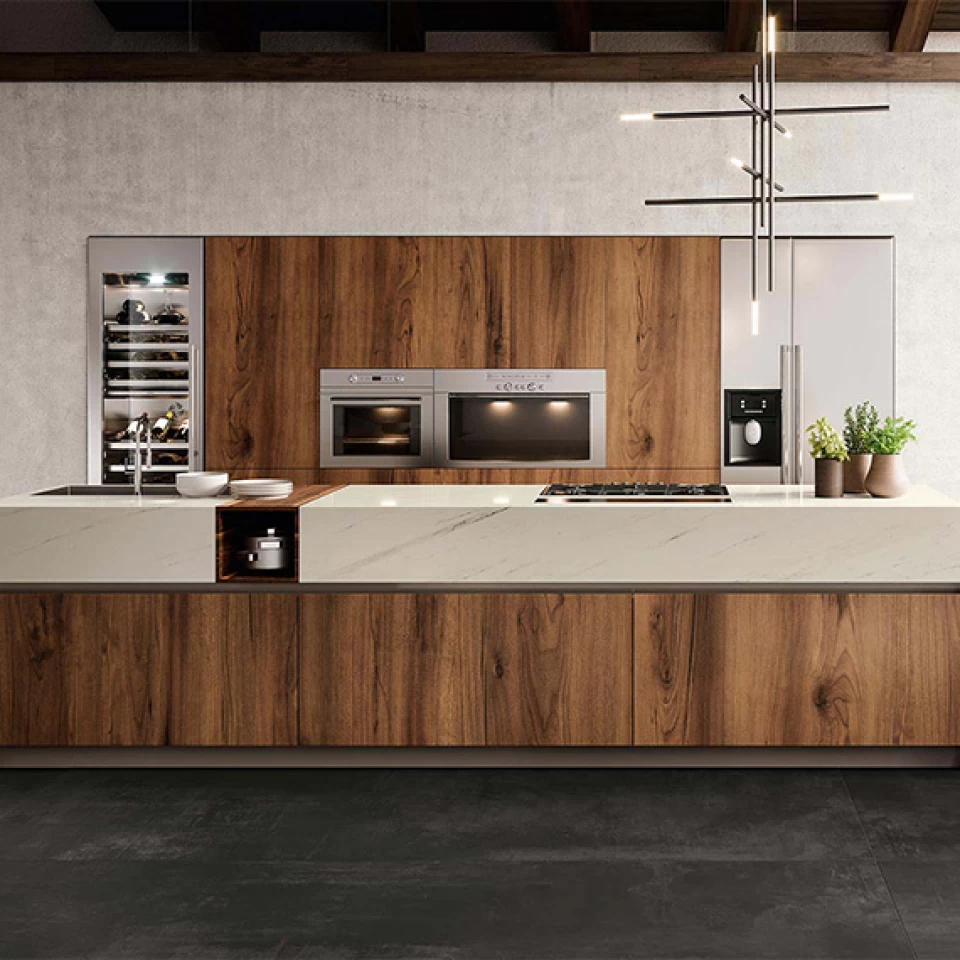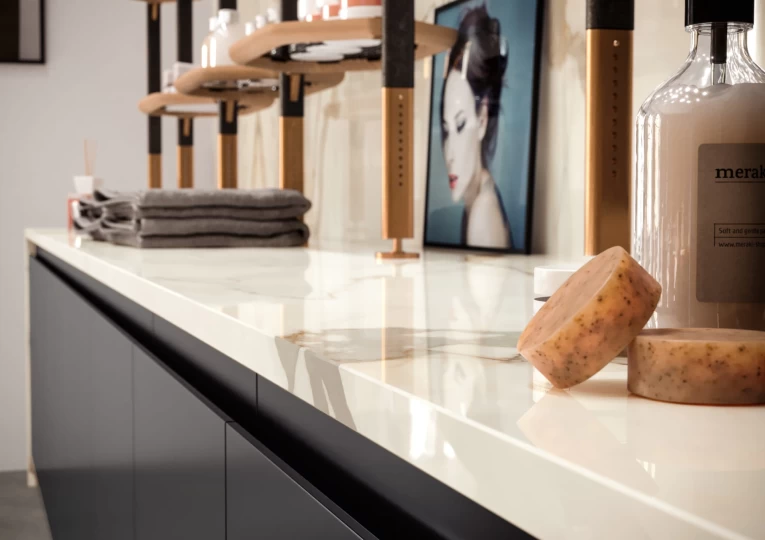
Polished porcelain tiles
Polished porcelain tiles can give any residential or commercial space a distinct aesthetic. It is an eye-catching modern style, with a unique character and texture. In this article, we will take a look at what polished tiles are, and how to maintain them.

What is polished porcelain?
Polished porcelain tiles are ceramic tiles that are specially treated using a diamond disk. Thanks to this process, their smooth soul is revealed, providing elegant styles for contemporary style finishes. These tiles, especially in the case of large marble effect tiles, are appealing for both commercial and residential spaces, as they offer a lot of design variety and colour tones.

The pros and cons of polished porcelain
Polished porcelain comes with certain advantages as well as some drawbacks. Let’s review these considerations.
Pros
- Luxurious high end feel
Polished porcelain tiles have a high-gloss finish that reflects light, creating a spacious and elegant look, adequate, for example, for a modern marble effect bathroom. They come in various colours and patterns, offering many different design possibilities. - Easy cleaning
These types of tiles offer a non-porous surface, making them resistant to stains and easier to clean. Dirt and spills typically wipe up easily with little effort. - Durability
Porcelain tiles are incredibly strong and resistant to scratches, chips, and wear. This means they are the ideal choice for a long lasting flooring solution. - Moisture resistance
Polished porcelain tiles are nearly impermeable to moisture, making them suitable for kitchens, bathrooms, and other areas exposed to water.
Cons
- Can be slippery when exposed to moisture
The smooth, shiny surface of polished tiles can get slippery when wet, which means they would not be the ideal choice for high-traffic commercial areas, bathrooms, and households with young children or elderly individuals. - Visible footprints and scratches
The glossy finish can show signs of wear and tear more prominently such as water marks, footprints, and even minor scratches. This may require frequent cleaning to maintain a pristine appearance. - Higher cost
Polished porcelain tiles are generally more expensive than other types of tiles due to the additional processing involved. Therefore, if you are considering using these tiles for your design projects, you need to take into account a slightly higher budget.

What are the key differences between polished vs unpolished porcelain tiles?
Both polished and unpolished porcelain tiles are durable and valid choices, but they offer different aesthetics and functionalities. Their key differences are:
- Finish and texture
- Polished tiles have a smooth, high-gloss finish which is amazing at reflecting light and creating a bright and spacious feel. Unpolished tiles have a matte or honed finish, offering a more natural and textured look which can be smooth or slightly rough depending on the type.
- Slip resistance
- Due to their smooth surface, polished tiles can become slippery when exposed to moisture. This means they are not ideal for high traffic areas. Unpolished tiles, on the other hand, thanks to their textured surface provide better slip resistance, making them safer for wet environments and high-traffic areas.
- Scratch resistance
- Polished tiles are durable, but their smooth surfaces can make scratches stand out more. In comparison, unpolished tiles are usually more suited for environments where you would expect a lot of wear and tear thanks to their textured surface which helps hide minor imperfections.
- Cost
Polished tiles are generally sold at a higher price point than unpolished tiles due to the additional processing involved in achieving the glossy finish.

How to clean polished porcelain tiles
Here is a summary on how to clean polished porcelain tiles. Head over to our full guide if you want comprehensive advice on how to clean all types of porcelain tiles.
- Remove loose dirt and debris
When dusting use a soft-bristled broom or a vacuum cleaner with a soft brush attachment. This will help prevent scratching the porcelain. For daily cleaning, use a microfiber mop to trap and remove dust. Try and avoid traditional mops, as their abrasive texture can scratch the tiles.
- Deep cleaning
Choose mild, non-abrasive cleaning products when performing deep cleaning. Avoid using harsh chemicals, soap-based detergents, or oil-based products, as they can leave a film and dull the premium shine effect of the polished porcelain tiles.



